What was the World Like when Christ was Born?
As we finish our Sunday School study of the Old Testament, we look at Malachi (tithing, the coming of Elijah), and then suddenly we are at the birth of Christ. We do know that 400 years have elapsed between Malachi and Christ and that it seems there were no prophets in the Holy Land or in Babylon during that time, but we don’t picture any changes in the culture during that big empty space.
I don’t know where you are right now. Whether you are in Salt Lake City or Manilla or Lima, picture the place where you are standing as it existed 400 years ago. Now picture what it might be like 400 years from now. Pretty jarring, right? Well, Christ’s world didn’t develop technologically at the pace we are now experiencing, but His culture was far different from Malachi’s. Right now, I’m going to try to give you a bit about the lay of the land. It’s really important for you in understanding the life of Christ.
Just to set the tone:
And it came to pass that Enoch looked; and from Noah, he beheld all the families of the earth; and he cried unto the Lord, saying: When shall the day of the Lord come? When shall the blood of the Righteous be shed, that all they that mourn may be sanctified and have eternal life?
And the Lord said: It shall be in the meridian of time, in the days of wickedness and vengeance (Moses 7:45, 46).
Jews had Dispersed Far and Wide
Whenever there is a mass migration talked about in the Bible we tend to picture the entire group of people moving together from one place to another. But large, migrating groups were never actually cohesive.
When the Israelites left Egypt with Moses many stayed behind. The blood of Israel, therefore, is found in Egypt, not only from these Israelites but from later groups of Jews who migrated there.
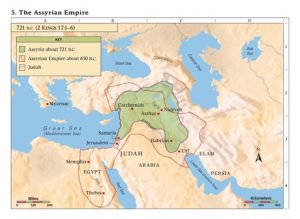
Much later, in 730-ish B.C. when the Assyrians attacked the northern kingdom of Israel, they enacted a huge population transfer, sending trusted people of their own kind to Israel and then removing Israelites out of Israel to Assyria. During the journey to Assyria, one group of Israelites repented, found favor with God, and separated from the group to become a now-hidden, cohesive people. They are the other “lost sheep,” who have had prophets and scriptures and someday will return as a distinct group. Other Israelites settled all over Assyria and through the years migrated in every direction. That’s one reason why descendants of Israel are found worldwide.
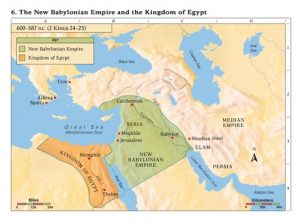
Judea held on over a hundred years longer than the northern kingdom but grew ever more wicked until they too qualified for destruction. The Babylonians came in three times with each attack being more destructive and brutal. Again, they took the best and brightest out of Judea and left the indigent and homeless. Life is never easy for Jews in a gentile culture, but they made the best of it, and for the 70 years they were in Babylon, the Jews got kind of comfortable. Then the Medes and Persians attacked Babylon and overcame it.
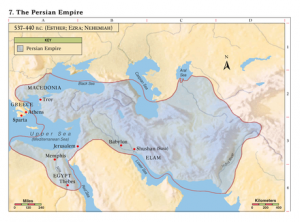
Cyrus the Great of Persia (a Zoroastrian by religion, and prophesied of by name in the Bible) announced that he would help the Judahites to return to Judea. The Jews welcomed the news with a resounding “Meh!”. Things were pretty good in Persia, and Jerusalem was a ruin.
The majority of Jews didn’t return, and for hundreds of years, there were more Jews in Babylon than in the Holy Land. Jewish sages administrated from there for many hundreds of years, finally producing the “Bavli,” the Babylonian Talmud, in the 5th century A.D. Some people did move from the area of Babylon of course, but many went elsewhere, not back to Jerusalem. In fact, when Christ was born, 1 million Jews (!) lived in Alexandria on the Mediterranean coast of Egypt. There were large societies of Jews in Syria, throughout the Middle East and the Mediterranean.
Hebrew Fell out of Use

Seventy years in Babylon did a number on the Jews’ use of Hebrew in everyday life. Aramaic was the language used most among the Assyrians who overcame Israel, and the Babylonians who overcame Judah. Because the Hebrew language was becoming the language of the scriptures and not the language on the street, Jews needed help understanding the scriptures.
That’s where learned men like the scribes came in. A group rising in importance, scribes had been record-keepers and copyists of scriptures. They understood the law (of Moses), understood Hebrew, and could teach and guide from the scriptures. Without prophets, scribes and sages were relied upon more and more. This was especially the case for Jews outside of Judea. At the temple, there were priests to influence the people, but far from the temple, that was not the case. In a way, this was the beginning of rabbinical Judaism.
Note that there was no common interpretation of the scriptures among the scribes, so gradually, varying religious sects grew up, such as the Sadducees, the Pharisees, and the Essenes (see below). Jesus was a sage of the scriptures and the law who was not descended from the priestly line of Aaron. People were used to sages and scribes, and may have visualized Jesus in that category, calling him ‘teacher’ or ‘rabbi.’
Jesus probably relied upon the Galilean dialect of Aramaic in most of His communication, but He would have also used the language of the scriptures, Hebrew, in the synagogue. In the marketplace, Jesus surely would have spoken Greek. Wait. Greek?
Judea Struggled with Corruption and War
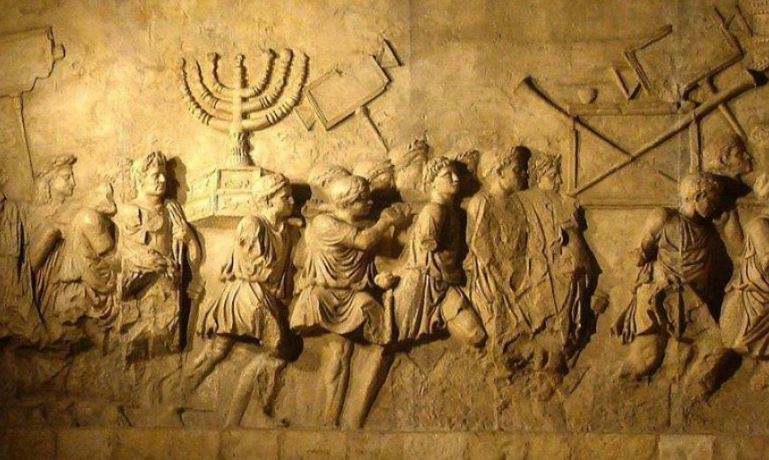 So let’s start with the construction of the 2nd temple in Jerusalem by those Jews who returned from Babylon and Persia. Not only were there not many people around to build it, but the Samaritans in the north did what they could to interfere. The result was a small, serviceable temple and lasting animosity toward the Samaritans. Overseers of Judea were officers of the Persian Empire, but locally, the priests managed a theocracy in the Holy Land.
So let’s start with the construction of the 2nd temple in Jerusalem by those Jews who returned from Babylon and Persia. Not only were there not many people around to build it, but the Samaritans in the north did what they could to interfere. The result was a small, serviceable temple and lasting animosity toward the Samaritans. Overseers of Judea were officers of the Persian Empire, but locally, the priests managed a theocracy in the Holy Land.
During these years, religion was loosely observed by many people, and even the priests intermarried with non-Israelites. Jerusalem continued to be a sort of backwater city. Judea remained at peace under the Persians, however, and gradually improved. It grew to half the size it had attained before captured by Babylon.
Something momentous happened in 331 B.C. that affected the entire eastern Mediterranean and much of the Middle East. Alexander the Great expanded the Greek empire and conquered Persia. Although he died at age 32, his empire was vast. Behind Alexander, the entire region flooded with Greek merchants, craftsmen, and laborers, bringing Greek culture with them. Retired Greek soldiers were given land throughout the empire.
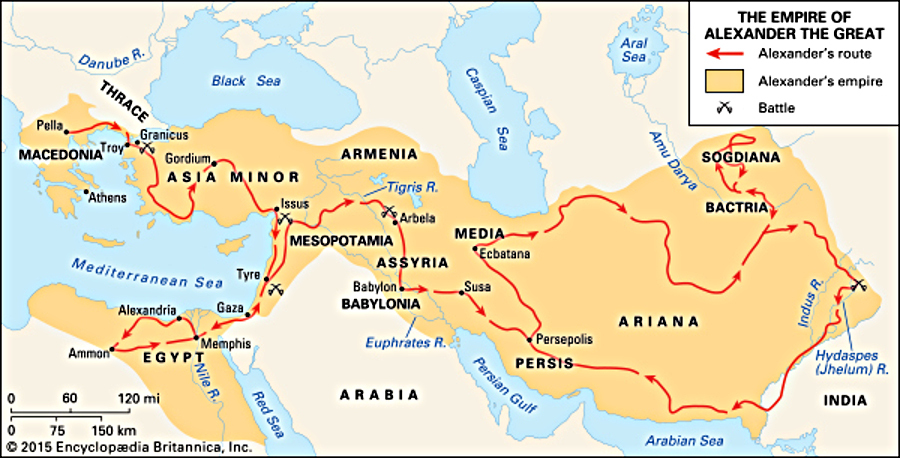
The “Hellenization” of all this territory had huge implications. Picture this: The Cleopatra you know and love, who died with Marc Anthony after defying Julius Caesar (around 30 B.C.) was descended from the Ptolemies of Egypt, a whole line of pharaohs. Ptolemy was Alexander’s general who took over the western part of his empire and who was Macedonian Greek. Cleopatra was Greek, as were her ancestors. In fact, she was the first Ptolemaic pharaoh to learn Egyptian…just before Rome took over.
Greek society endured for a long time and had overwhelmed the Holy Land at the time of Christ. Look at a map of the Holy Land at the time of Christ, and you will see many cities with Greek names. Greek philosophy permeated Jewish beliefs and later Christian beliefs. Idealization of the human body (especially demonstrated in art and athletics), superstitions, paganism, and materialism were part of Greek culture. The Greek language was well-known throughout the cities and even the smaller towns of Jewish Palestine. It began to feel like Judaism was a backwater religion, embarrassing in its backwardness.
Alexander’s other general, Seleucus, inherited the eastern part of his kingdom, notably Syria. The Ptolemies and Seleucids fought each other for control of Israel and Judea. But in later years, historians talk about Syrian/Greek alliances attacking or governing the Holy Land under the Seleucid kings. Antiochus IV, who came to power in 175 B.C. decided he would destroy the religion of the Jews and force Greek religion upon them. His forces desecrated the temple, kept the Jews from worshipping, and killed many. The Pharisees and Sadducees became more important during this time.
In 167 B.C. a family of Pharisees decided to revolt. They were just common people, the family of Mattathias the Asmonean and his five sons, but they rallied the people behind them and actually drove out the Seleucids and rededicated the temple. Called the Macabbees (hammerers), the miracle wrought for them in the temple which caused a bit of oil to burn for 8 days is now remembered in the holiday of Hanukkah.
The Macabbees continued to rule Judea and even expanded the borders, but the family became thoroughly corrupt. They were called the Hasmonean Dynasty. With continued Seleucid meddling, the station of high priest became a position one could buy with money, and the Pharisees and Sadducees fought each other in the streets at times. The Essenes withdrew to Qumran because the priesthood and temple were corrupted. The Samaritans had built their own temple at Mt. Gerazim in Samaria and the Hasmoneans destroyed it.
Things were pretty messy, so there was not a lot of resistance when the Roman general Pompey arrived to “make peace” in 63 B.C. From the arrival of Pompey, there was Roman rule, Greek culture, fractured Judaism, corrupt priests, and a few humble people who sought the Spirit as they tried to be true to the One God.
People You Should Know
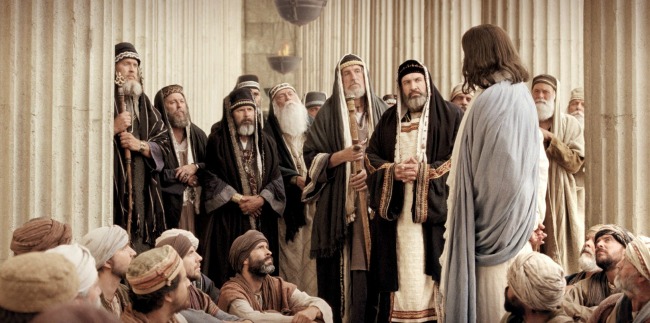 Herod the Great
Herod the Great
Herod the Great was the Roman client-king of Judea until a year after Christ was born. He was hated, feared, and respected. He was a descendant of Esau (an Idumean) and therefore not considered Jewish by his Jewish subjects. He married Mariamne, who was a descendant of the Hasmoneans (Maccabees) and that helped, but he had her killed. He undertook huge building projects, including expanding the 2nd temple, building the beautiful Roman port and resort of Caesarea on the Mediterranean coast, the fortress of Masada, and his palace at Herodium. He ruled over a mixture of cultures and tried to please them all, but killed family members and others who threatened his position. He carried out the murder of the innocents in Bethlehem in an attempt to kill the infant Jesus.
Herod Antipas
Herod Antipas was the son of Herod the Great and the Roman ruler of Galilee when Christ was brought to trial. Because Jesus was from Galilee, Pontius Pilate referred Jesus to him rather than try to judge him himself. Herod Antipas brought about the death of John the Baptist who had accused him of adultery. Herod lost his seat of power in 39 A.D. when his nephew accused him of conspiracy against the then Roman emperor Caligula.
Pontius Pilate
Pontius Pilate was the prefect of Judea while Tiberius was emperor in Rome, from about 26 – 36 A.D. He was an upper-class Roman. Pilate as portrayed in the scriptures seemed to be reluctant to condemn Jesus, sending him to Herod, and offerring Bar Abbas in His place. Pilate was deposed in 37 A.D. after he violently put down a Samaritan revolt.
Caiaphas
Caiaphas was a Sadducee and was appointed by the Romans to the office of High Priest. He was the son-in-law of Annas, the former high priest, who (through paying money to the Romans) also put several of his sons in the same office. Caiaphas stayed in office for quite a while, because he was able to please the Romans. He was still in office when Pontius Pilate was recalled to Rome.
Pharisees
Pharisees (“set apart”) were not part of a specific sect but a religious persuasion that influenced culture and politics. They believed in Jewish purity through living the Law of Moses exactly. They believed in the resurrection and in the oral traditions that were not directly recorded in scripture. They rejected Greek influence. They could be poor or middle class, but few were rich. They tended to be judgmental and to make an outward show of living the law. When the Jews were scattered by the Romans in 70 A.D. their form of Judaism evolved into rabbinical Judaism.
Sadducees
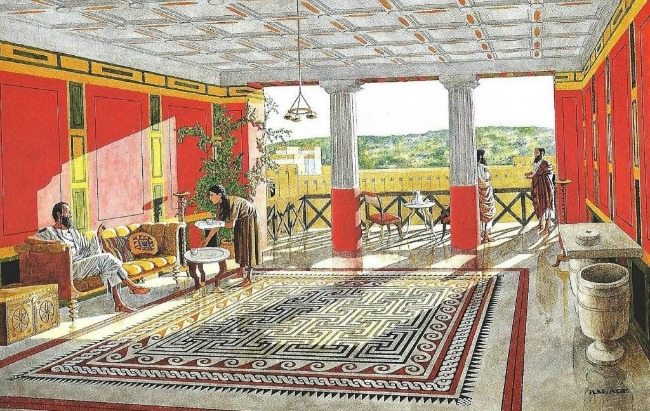
Sadducees (from “Zadok, the high priest”) tended to be wealthy Jews from influential families. They only accepted what was found in scripture and did not believe in the resurrection. They accepted Greek culture, and their homes in Judea employed Greek architecture. They focused on priestly lineage and social importance and faded away after the Romans scattered the Jews in 70 A.D.
Scribes
Scribes during the Babylonian captivity kept records and copied and reproduced the scriptures. As Jews began speaking Aramaic and Greek, the scribes began to expound and teach the scriptures, which were written in Hebrew. The scribes were not unified in any philosophy but most probably followed the ideas of the Pharisees.
Essenes
During Hasmonean rule, the Essenes began to feel like the temple was defiled and so was the priesthood. Although some lived a consecrated life in society, some sequestered themselves in Qumran hoping to return to a purified Jerusalem and temple someday. They kept a different calendar than the Pharisees in Jerusalem, so their high holy days didn’t match most Jews’ in the city. They were celibate and demanded that their members lived very rigorous laws of purification. They kept records and hid them in caves. Those records are now called the Dead Sea Scrolls. (There is still debate among scholars as to whether the Essenes authored the scrolls.)
The Sanhedrin
The Sanhedrin (“sitting together”) were assemblies of either twenty-three or seventy-one rabbis appointed to sit as a tribunal in every city in the ancient Land of Israel. The smaller assemblies in the cities were considered “lesser” to the Great Sanhedrin in Jerusalem. They met in a building called the Hall of Hewn Stones and convened every day except the Sabbath and High Holy Days. Caiaphas, who famously accused and persecuted Christ, leading to Christ’s crucifixion, had purchased his position over the Sanhedrin, which had been held by other family members before him.
The Sanhedrin actually continued to function after the destruction of the temple by the Romans in 70 A.D. and moved to Galilee. It functioned under various names and iterations until 425 A.D. and finally ended because of intense persecution by the Eastern Roman Empire.
The Law of Moses dictated many rules for the Sanhedrin to follow in order to provide fair trial for those accused of crimes, nearly all of which were broken in order to condemn the Savior.
Sacarii
The Sacarii were part of the zealots who were against Roman rule over the Jews. Their name comes from the daggers they concealed under their robes. “At public gatherings, they pulled out these daggers to attack Romans and Hebrew Roman sympathizers alike, blending into the crowd after the deed to escape detection” (Wikipedia). The Jews who were cornered by the Romans at Masada after the destruction of the temple were zealots.
The Family of Christ
Matthew 13:54-56 says, “…Is not this the carpenter’s son? Is not his mother called Mary? And his brothers, James, and Joseph, and Simon, and Judas? And his sisters, are they not all with us?” Thus we know that Jesus had four brothers and at least two sisters. It is Jesus’ brother James who continues to show up in the Bible after Christ’s crucifixion. According to The Oxford Dictionary of the Christian Church, when Peter the Apostle left Jerusalem, it was James who became leader of the church in Jerusalem and was held in high regard by the Jewish Christians. Hegesippus reports that he was executed by the Sanhedrin in 62 A.D.
Both Mary (Miryam) and Joseph (Yosef) were Davidic descendants of the tribe of Judah. It is interesting that Mary and Joseph lived in Galilee rather than closer to the temple in Judea, considering how faithful they were and considering their lineage. Some scholars propose that their ancestors may have had government assignments to be there under the Hasmoneans.
The Family of John the Baptist
The family of John the Baptist were Levites, and John was the connector between the Aaronic Law of Moses and the foundational principles of sacrifice, repentance, and baptism, and the higher laws of Christ and the Melchizedek Priesthood. He was born six months before the Savior.
John’s family lived in Judea and both of his parents were descendants of Aaron. John’s father, Zacharias, was a priest who served in the temple, where he was visited by the angel Gabriel (who in mortality was Noah) and told that his barren and aging wife, Elizabeth, would bear a son. Zacharias was not a high priest (and was not in the Holy of Holies) but was one of the thousands of priests who served in the temple. The story about his martyrdom really comes from non-scriptural material, and though it became accepted among later Christians, may refer to an earlier prophet by the same name.
What do you think would be the hardest thing about following Christ in times like these? Share your ideas in the comments.


